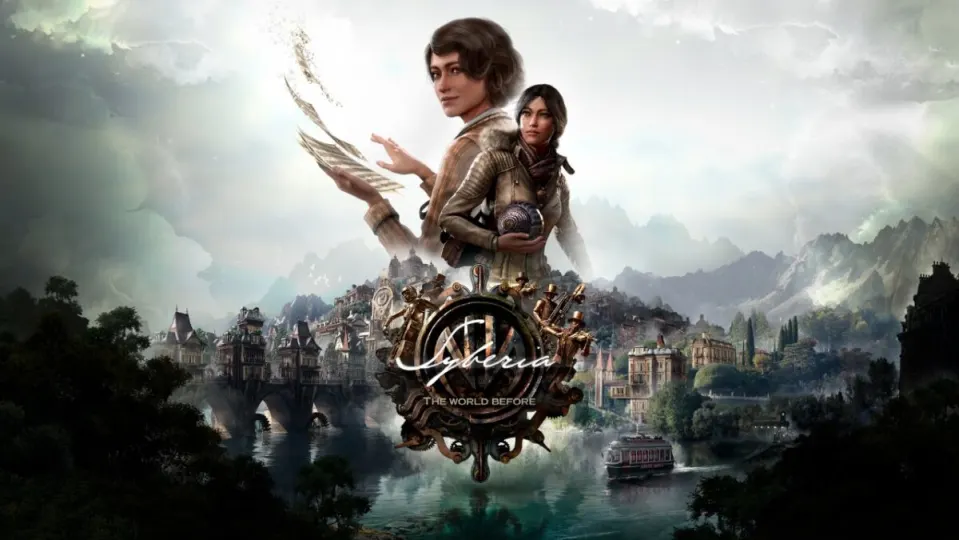Somewhere at the intersection of Tomb Raider, Bioshock, and an H.G. Wells novel sits the Syberia series of games. Conceived by Benoît Skoal and written by Catherine Perot, a small team at Microïds brought the first game to life. The series follows protagonist Kate Walker as she unravels a mystery about the family behind automatons.
The series has taken on such a rich life with regard to its world-building and storytelling. Though the game lacks more complex mechanics, the point-and-click nature of the game only serves to reinforce the narrative focus. So what is Kate up to in Syberia: The World Before? More importantly, what connection does Dana Roze, a pianist in the 1930s, have to Kate in the early 2000s?
Let’s explore the game’s story, world, sound, character design, mechanics, and performance for an overall review.
Syberia series background
This game series is known for its immersive storytelling and follows Kate Walker in her journey. Here’s a quick summary of what happens in games 1, 2, and 3:
Syberia 1 (2002)
- Kate Walker, a lawyer, is sent to Valadiène, a fictional French village, to address a spring-automaton toy factory corporate takeover. She must get the approval of the last remaining family member, Hans Voralberg, encountering an automaton named Oscar on the way.
- She travels east with Oscar, collecting things important to Hans until she reaches a Communist-era mining complex called Komkolzgrad to retrieve Oscar’s hands.
- After a long adventure involving an old opera singer and an accidental murder of an obsessive, autocratic mine manager, Kate rides a special train with Oscar to Hans. He signs the papers and Kate prepares to go back to New York City, only to change her mind and stay with Hans and Oscar and search for mammoths.

Syberia 2 (2004)
- Kate’s old law firm has hired a detective to locate and retrieve her. In Romansburg, a made-up Russian town, Kate assists Hans in locating mammoths by prepping his special clockwork train. Kate deals with two criminals, Ivan and Igor, who tried to hijack the train but abscond with Hans instead.
- Trying to confront the thieves, Kate falls through the ice below a statue of a Youkol village hidden underground. She finds Hans here receiving treatment and the local shaman sends Kate into his dreams to wake him up. By removing but preserving Oscar’s heart, Hans is placed inside him as the automaton acts as a life support system.
- They set off in search of Syberia (inspired by Wrangel Island in our own Siberia) with a Youki partner only to be attacked by Ivan again. He gets fatally attacked by penguins while Kate, Hans, and Oscar reach Syberia and find mammoths. Kate bids Hans farewell and the detective sent to find her calls it quits since he can’t seem to locate her.
Syberia 3 (2017)
- Kate awakens in a clinic with a young Youkol named Kurk and Doctor Efimova. Unable to leave, she explores the clinic only to find evidence that Efimova and the Russian military plan to poison the Youkol’s water source and take their land.
- She escapes alone, warning the Youkol who will relocate but not without Kurk. A U.S. private eye slows Kate down, but she eventually rescues Kurk and gets Oscar’s heart back.
- The Youkols and Kate embark on their journey and fight a Quinak before finding an abandoned amusement park constructed by Hans. Kate revives Oscar by inserting Oscar’s heart into automaton bodies around the park.
- Kate and Oscar distract the Russian military as the Youkols escape. Efimova captures her and Oscar’s heart is removed.
Setting & tone
It’s difficult not to fall in love with the world of Syberia games. The charm of a world with automatons, trains, and that retro sci-fi feel is undeniable. What’s more: this game shows those things in their fully operational beauty. But the dark side of the story lies in the inclusion of the Brown Shadow faction who are akin to Nazis from our own history.
Overall, the mood for Syberia: The World Before is reserved with moments of levity. Kate is going through PTSD on top of finding herself trapped in a brutal labor camp controlled by military zealots.
Dana Roze inhabits a fictional 1930s Central European country called Osthethal. Her parents own an art shop and she is the top student at the music academy. Her family becomes a target of the Brown Shadow faction for being ethnic minorities.
Story: Dana Roze is the star
This story has everything: abandoned WWII era trains, a tragic romance, rumored-to-be mythical creatures, long-lost family members, and, of course, a memory-triggering melody. Past Syberia games are known for their weaving, enmeshed stories and this one is no different.
Without spoiling the plot entirely, it’s safe to say that fans of point-and-click games will enjoy the story of Syberia: The World Before. The separate and then converging storylines feel a bit hamfisted, but not in a way that pulls the players out of the story.
While Kate is the protagonist everyone knows, it is Dana’s story that shines the most in this game.
How long to beat Syberia: The World Before
Since it is an immersive point-and-click game, players can take as long or as little time as they want to beat it. There are also lots of optional objectives players can choose to complete or dismiss.
Main story: ~11 hours
Main story with side missions: ~13 – 17 hours
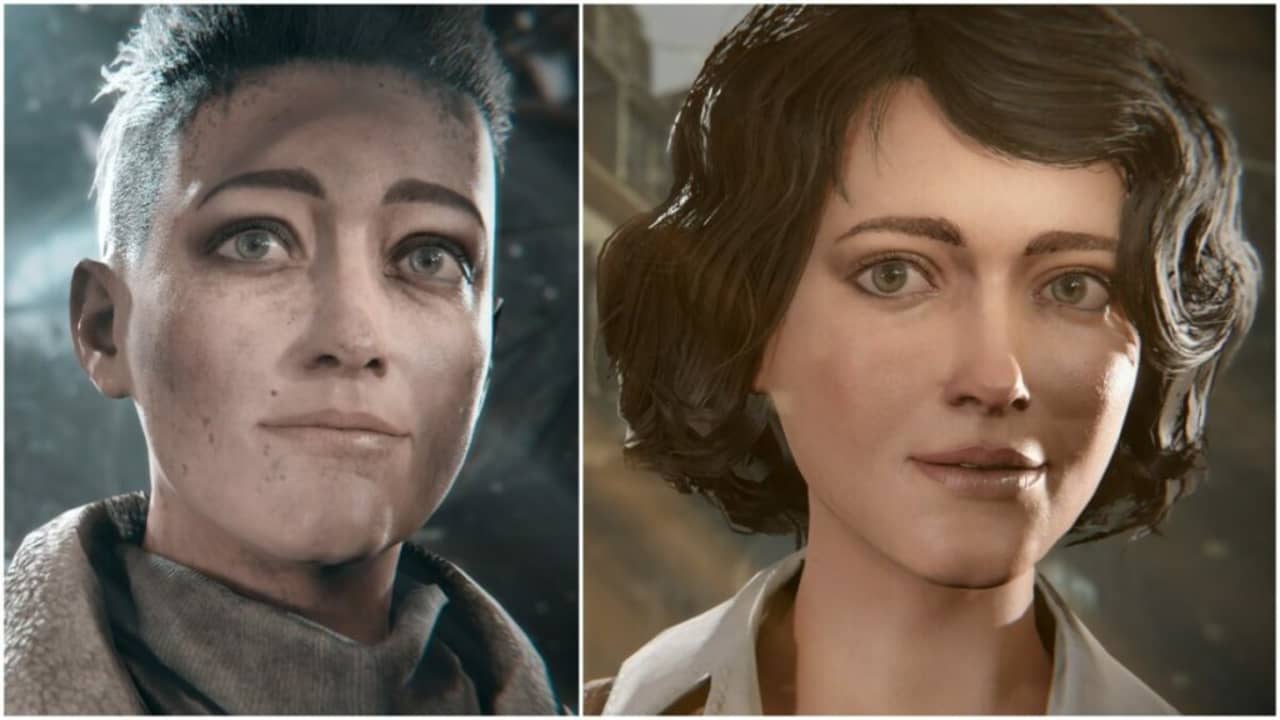
Syberia: The World Before performance
The series shifted from the Virtools engine to Unity in Syberia 3, so this is a return to the same engine. Many fans of the series were not pleased with this shift, but the fourth entry in the series feels more polished and at-home in Unity.
The game handles shadows and light very well with skin and clothes textures look great, too. That said, there can be stuttering here and there with some clipping or z-fighting (a flashing of different textures or meshes). Character mouth movements also appear a bit stiff in normal gameplay.
Overall, this does not detract much from the experience, and the cutscenes are very smooth.
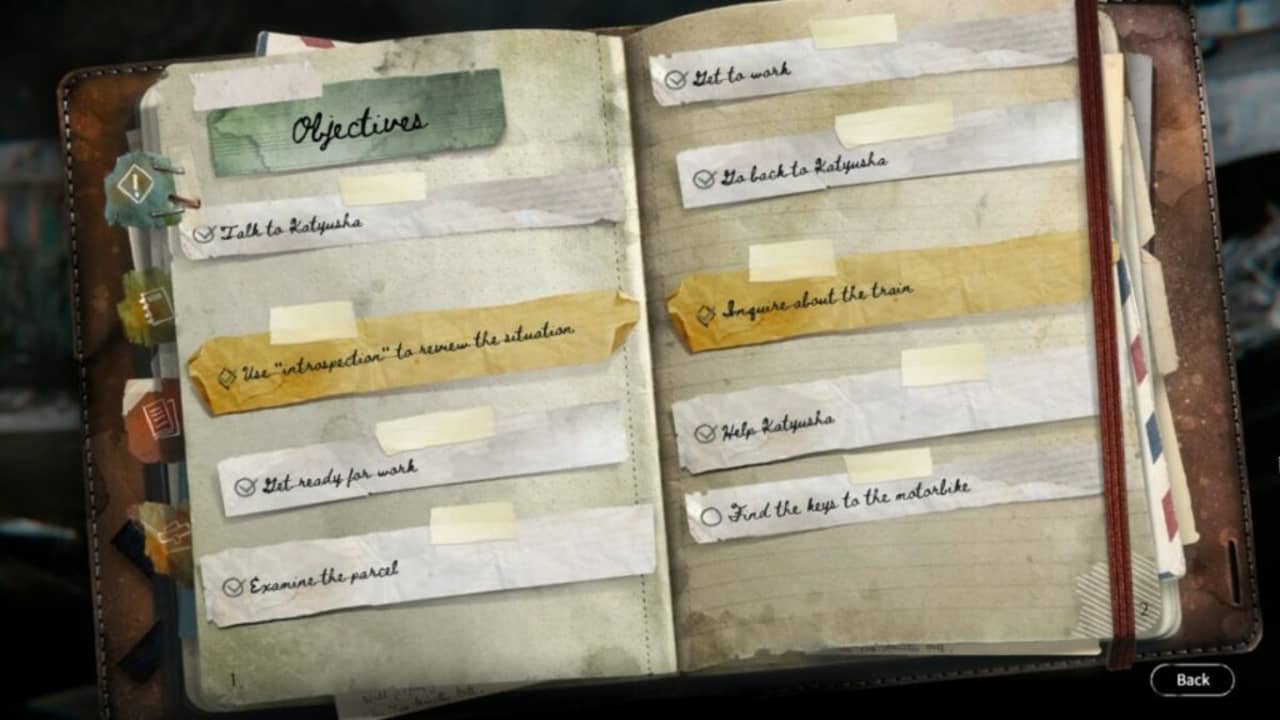
Syberia: The World Before gameplay & functions
This isn’t Fortnite or League of Legends; there won’t be any epic battles or action sequences. But that doesn’t mean this game lacks mechanics or excitement. With such a pensive and at times somber tone, players feel incentivized to explore and really soak in their surroundings.
The minimal UI reinforces that while the “Introspection” feature offers players another option to enhance immersion.
UI and interface
As you can see in the image above, the UI is as simple as it has been before. Players can access one of four tabs: inventory, journal, objectives, and documents.
Controls and mechanics
There isn’t much to the controls of this game. You point and click to move your character and interact with objects using left-click and drag. When you need an object like a key for a lock, a wheel pops up from which you can choose inventory items to try out.
Beyond that, however, there are two mechanics for players to be aware of:
- Introspection – This allows Kate to take a moment to assess various situations. At times, it can feel like an honest moment of Kate catching her breath, but it mostly feels like an unnecessary feature
- Hints – The question mark symbol on the upper right-hand side of the screen has a gauge. Once filled, players can use it to provide hints as to what they should be doing to complete their current objective
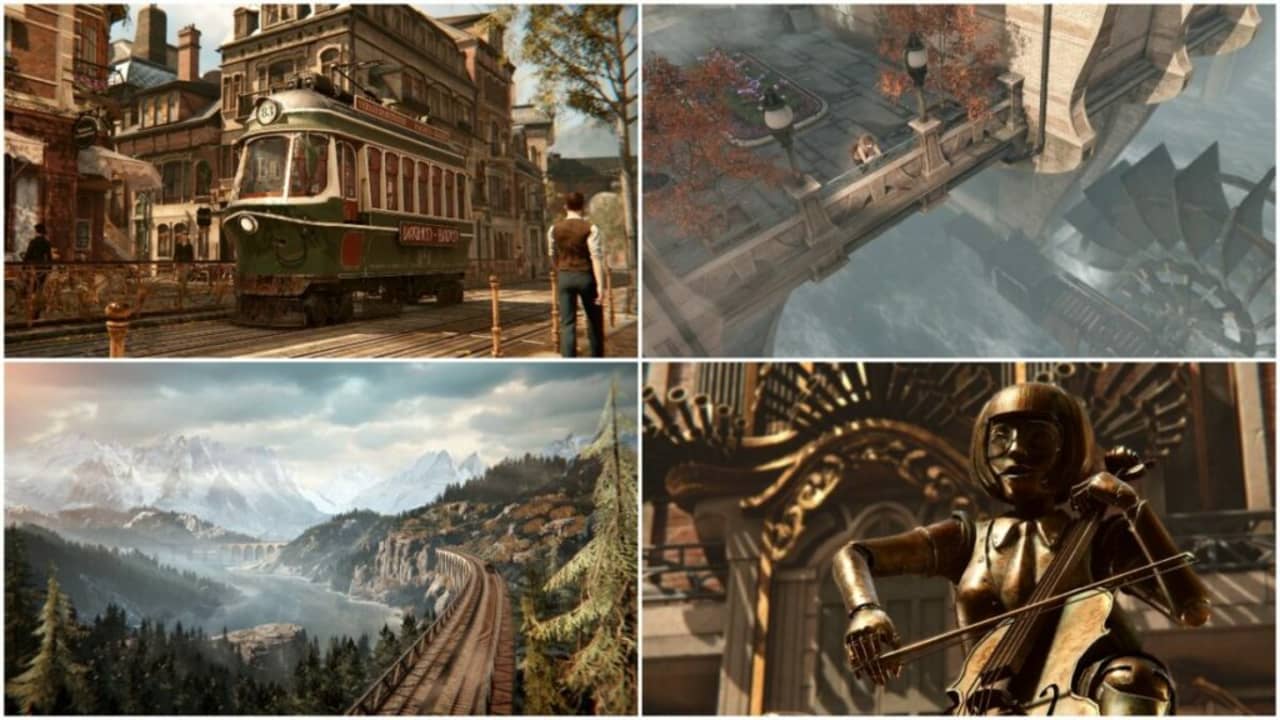
World, sound, and character design
As with other games in the series, the world of Syberia appears wonderfully lived-in across the game’s fourth entry. The sordid history of the Brown Shadow faction foils the idyllic nature of Vaghen in both timelines.
Moreover, the game’s score enhances emotionally impactful moments, such as one big moment very early on in the game involving Kate’s cellmate Katyusha. However, the game’s stiff character design lets down all of its wonderful aspects.
World design: immersive and inventive
As with all Syberia games, the world in which the story takes place is breathtaking. The steampunk style of the automatons still active in the 1930s captivates while the starkness of a decrepit society in the 2000s roots players in reality.
During cutscenes, the camera work also serves to show off the world in a way that feels as if you are truly experiencing it. For instance, in the opening sequence, as Dana performs, we see automaton musicians emerge from the streets and buildings in such a way that it feels immersive.
This attention to detail can be found throughout most cinematics of the game.
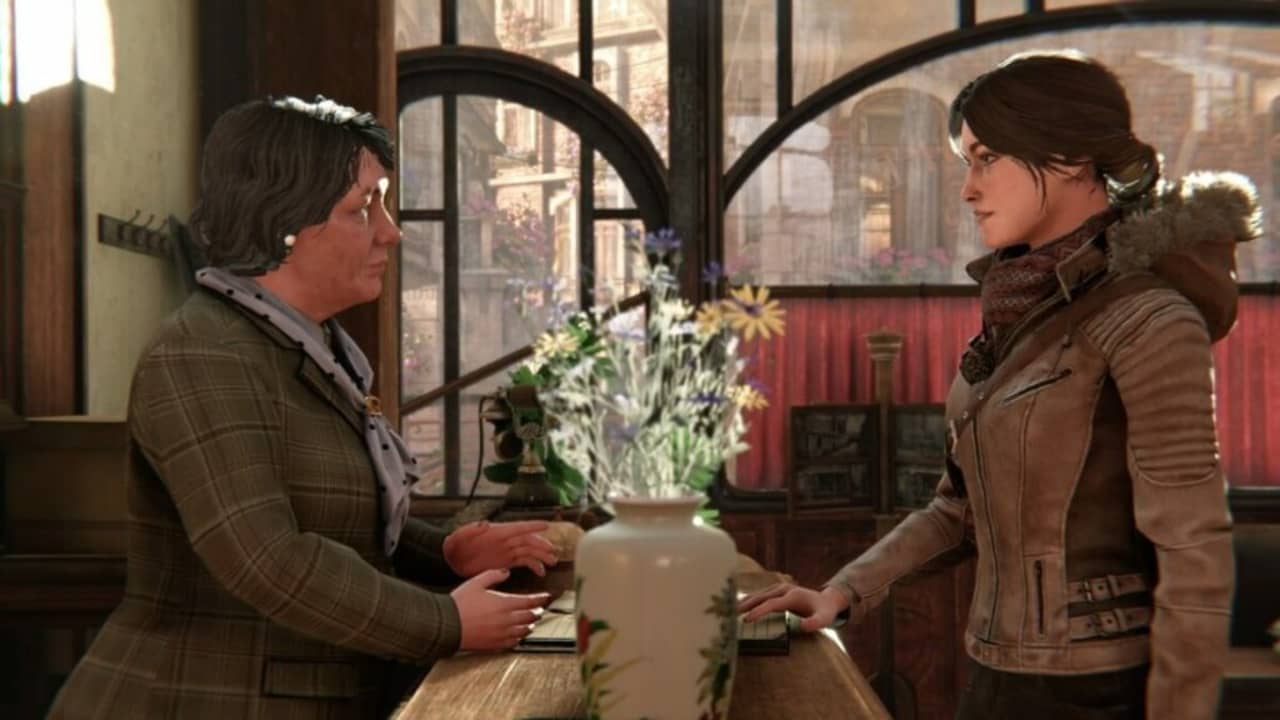
Character design: in-theme, but limited
There isn’t a ton of difference in character modeling of the main characters. After all, they are supposed to be related, which makes sense. However, the variation among all characters feels a bit limited overall.
What’s more: the voice-acting in the game feels forgotten. The innkeeper, seen above, is British in a town known for speaking German. Katyusha’s Russian accent is hit or miss, as well, but this kind of note is not new for Syberia games. Reviews for past titles question the choice to have many characters be British or speaking English vs. German or Russian.
Sound design: music with pedigree
Inon Zur has composed many recognizable video games, films, and shows. From Escaflowne and Power Rangers to Star Trek games, Dragon Age: Origins, and the upcoming Starfield, his music is everywhere. He also composed the music for Syberia games 2, 3, and the latest title.
For a game with such a focus on story and emotions, the music must be a character unto itself. Zur ensures that at times minimal and at times sweeping score. It makes a beautiful addition to the immersion of the game.

Verdict: an adventure worth having
Despite some technical hiccups, scaled-back character diversity, and a very simple control schema, Syberia: The World Before shines in a video game landscape filled with bloated or content-shallow titles.
The cinematography of the experience indeed places you in the shoes of both protagonists. Playing detective has also never been more fun as you explore abandoned trains, history-filled streets, or spoofy snowscapes.
If you’re a fan of story-rich experiences, pick up this game. That’s the bottom line.
PROS
- Incredible narrative storytelling
- Established game series
- High depth of variation depending on player choices
- Beautiful soundtrack and visuals
- Point-and-click mechanics make for a more casual gaming experience
CONS
- Lacks complex mechanics and true combat mechanics
- Puzzles feel a bit thin compared to similar style games
- Somewhat limited character model diversity
- “Introspection” feature feels like a bit of an afterthought
Developer: Microïds Studio Paris
Publisher: Microïds
Game Modes: Single-player
Game Engine: Unity
